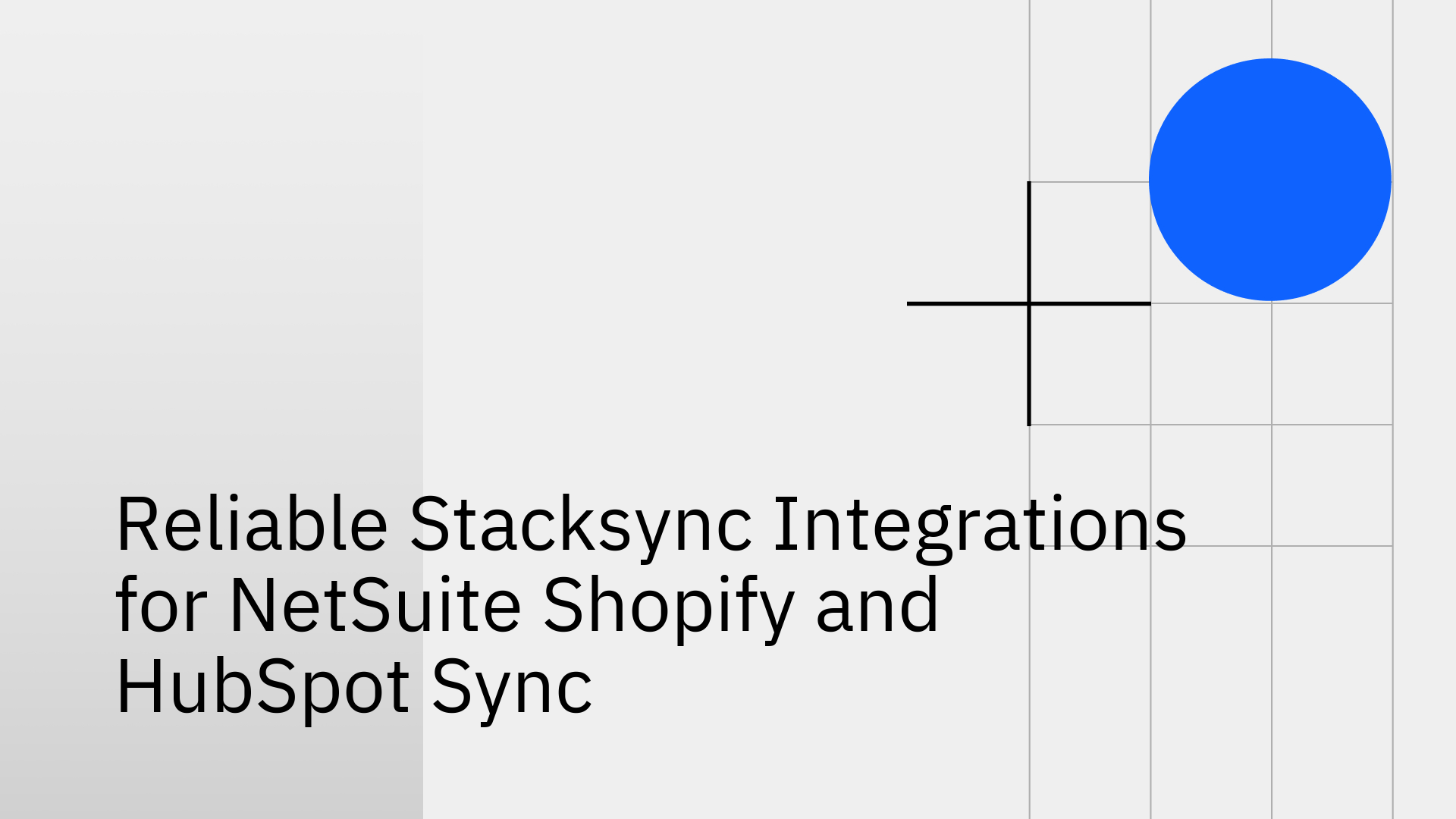
Maintaining data consistency across mission-critical operational systems is a significant technical challenge. When your ERP (like NetSuite), e-commerce platform (Shopify), and CRM (HubSpot) operate as data silos, the consequences can include inventory discrepancies, delayed order fulfillment, inaccurate financial reporting, and a fragmented customer view. Traditional integration methods, such as custom code or generic iPaaS platforms, often introduce additional complexity, latency, and points of failure. They require ongoing maintenance and can divert valuable engineering resources from core product development.
This article details the technical challenges of integrating NetSuite, Shopify, and HubSpot and presents a purpose-built architectural solution for achieving reliable, real-time, and bi-directional data synchronization across your entire operational stack.
Connecting disparate, high-throughput systems requires more than simple data mapping. It demands a robust architecture that can handle high data volumes, complex entity relationships, and real-time updates without failure.
Connecting NetSuite with Shopify is a common requirement for e-commerce businesses seeking to automate operations. The goal is to create a seamless flow of data for:
While numerous point-to-point connectors exist on the Shopify App Store [1], [2], they often solve only part of the problem. These solutions can be rigid, lack the scalability to handle high order volumes, and may fail to integrate with the rest of your data ecosystem, creating yet another managed data silo.
For data-driven organizations, integrating HubSpot with a backend database (like Postgres, BigQuery, or Snowflake) is essential for analytics, reporting, and operational workflows. However, this presents significant technical obstacles:
Instead of relying on point solutions or resource-intensive custom code, a modern integration architecture is required. Stacksync is an operational data integration platform engineered specifically for real-time, bi-directional synchronization between enterprise systems. It provides a reliable, scalable, and unified foundation to connect your entire operational stack.
Stacksync directly addresses the core technical limitations of HubSpot integration. It provides a dedicated HubSpot connector that turns your database into a direct, real-time read/write interface for HubSpot data [6].
This is achieved by:
| Feature | Custom Integration (Webhooks/API Polling) | Stacksync Platform |
|---|---|---|
| Sync Method | Manual API polling and webhook listeners. | Real-time, bi-directional sync engine. |
| Performance | Limited by HubSpot API rate limits. | Optimized to bypass rate limits; thousands of RPS. |
| Reliability | No guaranteed delivery for webhooks; requires extensive error handling code. | Guaranteed data consistency with automated error handling, retries, and monitoring. |
| Setup | Weeks or months of custom development. | No-code setup in minutes. |
| Maintenance | Continuous engineering overhead to manage API changes and failures. | Fully managed service with zero maintenance. |
| Scalability | Brittle and difficult to scale with data volume. | Scales to millions of records and executions per minute [3]. |
While Stacksync provides a clear, purpose-built solution for HubSpot, its underlying architecture offers a fundamentally different way to approach the NetSuite and Shopify integration challenge. Instead of a rigid, single-purpose connector, Stacksync provides a flexible and scalable platform that unifies your entire operational data landscape.
With Stacksync, you can implement a hub-and-spoke model where your core systems—NetSuite, Shopify, HubSpot, and even others like Salesforce—sync bi-directionally with a central operational database or directly with each other. This architecture provides:
This approach moves beyond simple shopify netsuite sync options and provides an enterprise-grade data backbone for your business operations.
Adopting Stacksync's architecture for your core integrations delivers tangible technical and business benefits.
Stacksync is built to prevent silent sync failures and data corruption. Its engine includes conflict resolution to handle simultaneous updates and provides detailed logs and alerts to ensure that any issue is immediately identified and addressed. This helps ensure that your inventory counts, order statuses, and customer records are consistent across all platforms.
The platform is engineered to handle enterprise data volumes. Whether you are processing hundreds of orders a day or thousands per hour during a peak sales event, Stacksync scales accordingly. Its real-time performance ensures low latency, so business-critical information is available where it's needed most.
With a no-code setup process, Stacksync allows you to establish complex, bi-directional integrations in minutes. This frees your engineering team from the ongoing cycle of building and maintaining integration scripts. For advanced use cases, the platform offers pro-code capabilities, providing the flexibility to implement custom logic without sacrificing the reliability of the core platform [3].
By abstracting away the complexity of API management, Stacksync enables your team to focus on building features that create a competitive advantage, rather than maintaining data plumbing.
In conclusion, reliably connecting NetSuite, Shopify, and HubSpot requires more than a simple connector; it requires a modern data integration strategy. Stacksync provides the architectural foundation for real-time, bi-directional synchronization, enabling you to build a reliable, scalable, and unified operational data stack.